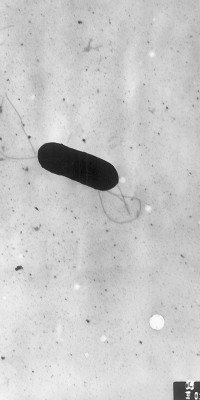Listeria monocytogenes is a species of pathogenic bacteria, which causes the infection listeriosis. The bacteria was named after Joseph Lister, a pioneer of antiseptic surgery. It is a facultative anaerobic bacterium, meaning it can survive in the presence or absence of oxygen.
L. monocytogenes enters the host via contaminated foods, invades the small intestine, translocates to mesenteric lymph nodes, and spreads to the liver, spleen, brain and, in pregnant women, the fetoplacental unit.
Transmission:
Listeria monocytogenes can be transmitted orally through foods such as milk, cheese, ice cream, raw vegetables, raw meat, raw and cooked poultry, raw and smoked fish, however the infective dose is not known.
The bacteria can also be transmitted from mother to fetus and through contaminated drinking water.
Symptoms:
Humans: The symptoms of listeriosis in humans include fever, muscle aches, nausea, and diarrhea. If the infection spreads to the nervous system, symptoms such as a headache, stiff neck, confusion, loss of balance, or convulsions can occur.
Pregnant women infected with listeriosis may experience only mild, flu-like symptoms, however, they can pass the disease to the fetus through the fetoplacental unit. The disease can be deadly to the fetus even when only mild symptoms persist in the mother.
Mice: Mice have been used as models for Listeria research. In testing, 80% of L. monocytogenes were killed within liver cells during the first 6 hours of infection. However, surviving virulent strains of the bacteria grew exponentially resulting in the progress of infection with focal necrosis.
It was observed that some of the mice infected with low doses seemed to have established a host-parasite balance without showing symptoms of acute illness.
Ruminants: In ruminants, listeriosis can cause encephalitis (inflammation of the brain), abortion or blood poisoning. Signs include depression, loss of appetite, fever, lack of coordination, salivation, facial paralysis, and circling. The disease is more common in younger animals (1 to 3 years old).
Diagnosis: Listeriosis is usually diagnosed when a bacterial culture grows Listeria monocytogenes from a body tissue or fluid, such as blood, spinal fluid or the placenta.
Diagnosis:
Listeriosis is usually diagnosed when a bacterial culture grows Listeria monocytogenes from a body tissue or fluid, such as blood, spinal fluid or the placenta.


